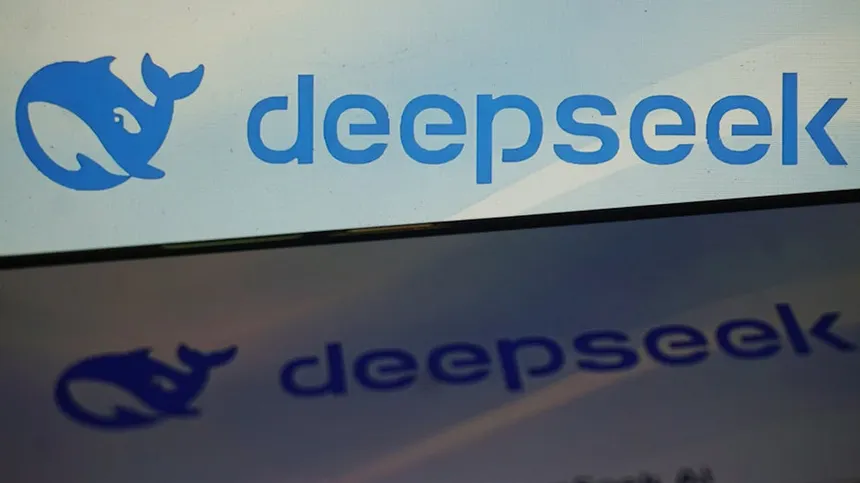DeepSeek is an artificial intelligence company that focuses on developing advanced AI technologies, particularly large language models (LLMs).
While specific details may evolve, here’s an overview of its potential contributions to revolutionizing AI technology, based on common innovation trends in the field:

1. Technical Innovations
- Efficient Model Architecture: DeepSeek may employ cutting-edge techniques like mixture-of-experts (MoE) or optimized transformer architectures to create smaller, faster models that rival larger counterparts in performance, reducing computational costs and environmental impact.
- Enhanced Reasoning Abilities: Specializing in logical reasoning and coding tasks (e.g., models like DeepSeek-R1), the company could address a key limitation in AI by improving problem-solving and step-by-step analysis capabilities.
- Extended Context Windows: Innovations in processing longer text sequences (e.g., 100K+ tokens) enable applications in legal, academic, or creative industries where analyzing extensive documents is critical.
2. Application-Specific Focus
- Coding and Development: Tailoring models for code generation, debugging, or documentation could streamline software development workflows.
- Industry-Specific Solutions: Targeting sectors like healthcare, finance, or education with fine-tuned models that understand domain-specific jargon and workflows.
3. Accessibility and Cost-Effectiveness
- Open-Source Initiatives: By releasing high-quality models openly (e.g., DeepSeek-MoE), the company may democratize access to advanced AI, fostering global innovation and adoption.
- Affordable Deployment: Optimizing models for edge devices or cloud-based APIs could lower costs for businesses and developers.
4. Ethical and Safe AI
- Alignment and Safety: Incorporating reinforcement learning from human feedback (RLHF) or constitutional AI principles to reduce biases, misinformation, and harmful outputs.
- Transparency: Emphasizing explainability in model decisions, crucial for regulated industries like healthcare or finance.
5. Market Adaptability
- Localized Solutions: For markets like China, DeepSeek might offer models optimized for Mandarin and regional regulatory requirements, filling gaps left by global competitors.
Example Innovations:
- DeepSeek-R1: A model focused on reasoning tasks, potentially outperforming general-purpose LLMs in logic-heavy applications.
- DeepSeek-MoE-16b: A cost-efficient MoE model that achieves performance comparable to larger dense models, reducing training and inference costs.
Table of Contents
Conclusion
DeepSeek positions itself as a disruptor by balancing technical excellence with practical usability.
Its focus on efficiency, reasoning, and accessibility could lower barriers to AI adoption while addressing critical challenges in the field.
As the AI landscape evolves, these innovations contribute to a more versatile and sustainable ecosystem.

1. Reasoning & Coding
- DeepSeek:
Specializes in logical reasoning (e.g., math, coding, step-by-step problem-solving). Models like DeepSeek-R1 are fine-tuned on technical datasets, enabling superior performance in code generation, debugging, and algorithmic tasks. This makes it ideal for developers, data scientists, or education-focused applications. - GPT-4 (OpenAI):
Excels at general-purpose reasoning (e.g., creative writing, summarization) but lacks specialized training for coding or logic-heavy tasks. While capable of code generation, it prioritizes versatility over technical precision. - Claude 3 (Anthropic):
Focuses on contextual understanding and nuanced language tasks (e.g., legal document analysis, diplomacy). Coding is not its primary strength, as it emphasizes safety and conversational alignment. - Llama 3 (Meta):
A general-purpose open-source model. Coding abilities depend heavily on community fine-tuning (e.g., CodeLlama variants). Out-of-the-box, it lacks DeepSeek’s specialized reasoning focus.
2. Efficiency
- DeepSeek:
Uses Mixture-of-Experts (MoE) architectures (e.g., DeepSeek-MoE-16B), where only a subset of model parameters (“experts”) activate per task. This reduces computational costs by 2–4x compared to dense models (all parameters active) while maintaining performance.- Example: A 16B-parameter MoE model can match the performance of a 70B-parameter dense model like Llama 3-70B.
- GPT-4:
Relies on a dense architecture, meaning all parameters are used for every query. This makes it computationally expensive, requiring high-end infrastructure for training and inference. - Claude 3:
Balances performance and cost but does not use MoE optimizations. Its efficiency stems from software-level optimizations rather than architectural innovations. - Llama 3:
Uses smaller dense models (e.g., 8B, 70B parameters) optimized for efficiency. While open-source, deploying larger models still demands significant resources.
3. Context Window
- DeepSeek:
Supports 128K–1M tokens, enabling analysis of extremely long documents (e.g., academic papers, legal contracts, codebases). Innovations like “sliding window” attention reduce memory usage while retaining long-context accuracy. - GPT-4:
Standard 128K token window, but performance degrades with very long inputs due to limited fine-tuning for extended contexts. - Claude 3:
Industry-leading 200K–1M token windows, with strong retention of details over long sequences. Excels in applications like book analysis or multi-document research. - Llama 3:
Limited to 8K–24K tokens, prioritizing short-context efficiency. Longer sequences require workarounds like document chunking.
4. Cost & Accessibility
- DeepSeek:
Democratizes access via open-source releases (e.g., DeepSeek-MoE) and affordable APIs. Developers can use its models commercially without licensing fees, lowering barriers for startups and researchers. - GPT-4:
Closed-source, with costly API tiers (e.g., $0.06 per 1K tokens for GPT-4 Turbo). Enterprise pricing limits accessibility for smaller teams. - Claude 3:
Closed-source, with pricing scaling based on context length (e.g., $0.02 per 1K tokens for 200K context). Targets enterprises with deep budgets. - Llama 3:
Open-source, but deploying larger models (e.g., 70B) requires expensive GPU clusters. Community fine-tuning adds time and resource overhead.
5. Ethics & Safety
- DeepSeek:
Employs RLHF (Reinforcement Learning from Human Feedback) and transparency tools to align outputs with human values. However, documentation on safety protocols is less publicized compared to Anthropic or OpenAI. - GPT-4:
Uses strict safety filters to block harmful content, but critics argue this leads to over-censorship (e.g., refusing valid requests for creative writing or coding). - Claude 3:
Built on Constitutional AI, a framework prioritizing harm reduction and ethical guidelines. Balances safety with flexibility better than GPT-4. - Llama 3:
Relies on the open-source community for ethical fine-tuning. Base models lack built-in safeguards, requiring users to implement safety measures themselves.
Comparison with Leading LLMs
| Feature | DeepSeek Models | GPT-4 (OpenAI) | Claude 3 (Anthropic) | Llama 3 (Meta) |
|---|---|---|---|---|
| Reasoning & Coding | Specialized in logical reasoning (e.g., DeepSeek-R1), outperforms in code generation and step-by-step problem-solving. | Strong general reasoning, but less specialized for coding tasks. | Advanced contextual understanding, but coding capabilities lag behind. | Decentralized focus; coding skills rely on community fine-tuning. |
| Efficiency | Uses MoE architectures (e.g., DeepSeek-MoE-16B) for high performance at lower computational costs. | Dense architecture (all parameters active), leading to higher compute costs. | Balances cost and performance but lacks MoE optimizations. | Smaller dense models (e.g., 8B/70B) optimized for efficiency. |
| Context Window | Supports up to 128K–1M tokens (varies by model), ideal for long-document analysis. | Standard 128K tokens, with limited long-context fine-tuning. | Industry-leading 200K–1M token windows for extended context retention. | Limited to 8K–24K tokens, focusing on short-context efficiency. |
| Cost & Accessibility | Open-source models (e.g., DeepSeek-MoE) for free commercial/research use; cost-effective APIs. | Closed-source, expensive API tiers for enterprises. | Closed-source, pricing scales with context length. | Open-source but requires significant resources for fine-tuning/deployment. |
| Ethics & Safety | Focus on alignment via RLHF and transparency, but less public documentation. | Strong safety guardrails, but criticized for over-censorship. | Constitutional AI principles prioritize harm reduction. | Relies on community for ethical fine-tuning; minimal built-in safeguards. |
Key Takeaways
- Reasoning Edge: DeepSeek outperforms GPT-4 and Claude 3 in specialized logical tasks (e.g., math, coding), making it ideal for technical workflows.
- Cost Efficiency: DeepSeek’s MoE models rival GPT-4’s performance at a fraction of the computational cost, challenging Meta’s Llama in open-source viability.
- Context Flexibility: While Claude 3 leads in ultra-long context, DeepSeek balances long-context capabilities with affordability.
- Open-Source Advantage: Unlike closed models (GPT-4, Claude 3), DeepSeek democratizes access to advanced AI, similar to Llama 3 but with better out-of-the-box reasoning.
This comparison underscores DeepSeek’s role as a disruptor, combining specialized performance, cost efficiency, and open access to compete with industry giants.
FAQ: DeepSeek AI Models
1. What makes DeepSeek different from other AI models like GPT-4 or Claude 3?
DeepSeek focuses on specialized reasoning and coding tasks, outperforming general-purpose models in technical workflows (e.g., code generation, math problem-solving). It also uses Mixture-of-Experts (MoE) architectures for cost efficiency, offers open-source models, and supports ultra-long context windows (up to 1M tokens).
2. Is DeepSeek open-source?
Yes! Models like DeepSeek-MoE-16B are released under open-source licenses, allowing free commercial and research use. This contrasts with closed models like GPT-4 or Claude 3, which require paid API access.
3. How does DeepSeek achieve better efficiency than larger models?
DeepSeek uses MoE architectures, where only a subset of model parameters (“experts”) activate per task. For example, the 16B-parameter DeepSeek-MoE matches the performance of a 70B-parameter dense model (like Llama 3-70B) while using far less computational power.
4. Can DeepSeek handle long documents or codebases?
Yes. DeepSeek supports context windows up to 1 million tokens, enabling analysis of lengthy texts (e.g., legal contracts, research papers) or entire software repositories. It uses techniques like “sliding window” attention to retain accuracy without excessive memory usage.
5. What industries benefit most from DeepSeek?
- Software Development: Code generation, debugging, and documentation.
- Education: Tutoring systems for math, logic, and coding.
- Legal/Finance: Analyzing long contracts or regulatory documents.
- Research: Summarizing technical papers or datasets.
6. How does DeepSeek ensure ethical and safe AI outputs?
DeepSeek employs RLHF (Reinforcement Learning from Human Feedback) to align outputs with human values. However, its safety protocols are less publicly documented than competitors like Anthropic’s Constitutional AI.
7. Can DeepSeek models run on local devices?
Yes, smaller models (e.g., 7B or 16B parameters) are optimized for edge devices. Larger models may require cloud infrastructure, but DeepSeek’s MoE architecture reduces hardware demands compared to dense models like GPT-4.
8. How does DeepSeek compare to Llama 3?
- Strengths: Better out-of-the-box reasoning/coding, MoE efficiency, and longer context support.
- Weaknesses: Llama 3 has a larger developer community for customization, while DeepSeek’s ecosystem is newer.
9. Does DeepSeek support languages other than English?
Yes! DeepSeek offers strong performance in Mandarin, making it popular in Chinese markets. It also handles other major languages, though English and coding languages (Python, JavaScript) are its primary focus.
10. What are DeepSeek’s limitations?
- Safety Transparency: Less detailed public documentation on ethical safeguards compared to Claude 3 or GPT-4.
- Niche Focus: Prioritizes reasoning/coding over creative tasks (e.g., storytelling).
- Community Size: Smaller developer ecosystem than Llama 3 or Hugging Face models.
11. How much does DeepSeek cost?
- Open-Source Models: Free for commercial/research use.
- APIs: Pricing is typically lower than GPT-4 or Claude 3, with pay-per-token or subscription plans.
12. Can I fine-tune DeepSeek models for my business?
Yes. Open-source DeepSeek models can be fine-tuned on custom datasets. The company also offers enterprise support for tailored solutions.
13. What’s next for DeepSeek?
Future updates may include:
- Larger MoE models with improved multilingual support.
- Enhanced safety and transparency tools.
- Integrations with developer platforms (e.g., VS Code, Jupyter).
14. How do I get started with DeepSeek?
- Visit the official DeepSeek website for API access.
- Download open-source models from platforms like GitHub or Hugging Face.
- Explore documentation and tutorials for fine-tuning and deployment.


Geef een reactie